Palma de Mallorca
Day 1 - A Day Through The Old Town

When you think of Mallorca, you probably imagine sandy beaches and a swim in the ocean. And while that’s definitely a great thing to do when visiting this island, Mallorca also has a fantastic city break destination: Palma de Mallorca.
Palma’s picturesque Old Town is a must-visit, no matter how much time you have. Even if you’re having a little wander through it, it’s worth your time. The streets are beautiful, with little squares and small but atmospheric alleyways. There are many cafes in the Old Town too, which give you a perfect excuse to sit down for a bit and enjoy some people watching.
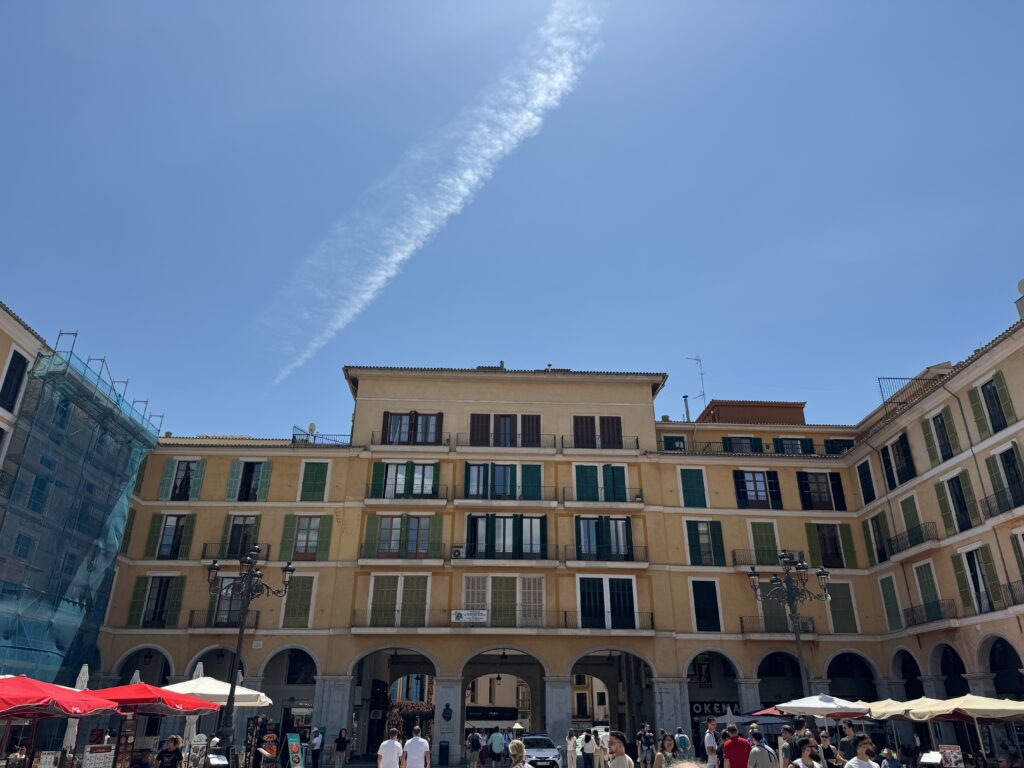
While you walk through the historic center of Palma, start the day in Plaza Mayor or Placa Major, as the English use to call it. This is where most of the markets and events in Mallorca take place. The rectangular square with a porticoed perimeter is similar with Plaza Mayor from Madrid, but at a much smaller scale. The houses built around the square all have yellow facades and green shutters, creating a very picturesque scenery. The buildings surrounding it are mostly offices or private residences, with cafes and restaurants on the ground floor. Some of the main streets of Palma branch out from the square.
On some days of the week, the plaza hosts an artisan market, whilst in January, it functions as the starting point for the feast day of Sant Sebastià.
It is a vibrant place today, bursting with life and fun, but things weren’t always so cheerful. The plaza is built on the site of the San Felipe Nerí Convent, which until 1838, was the seat of the Inquisition.
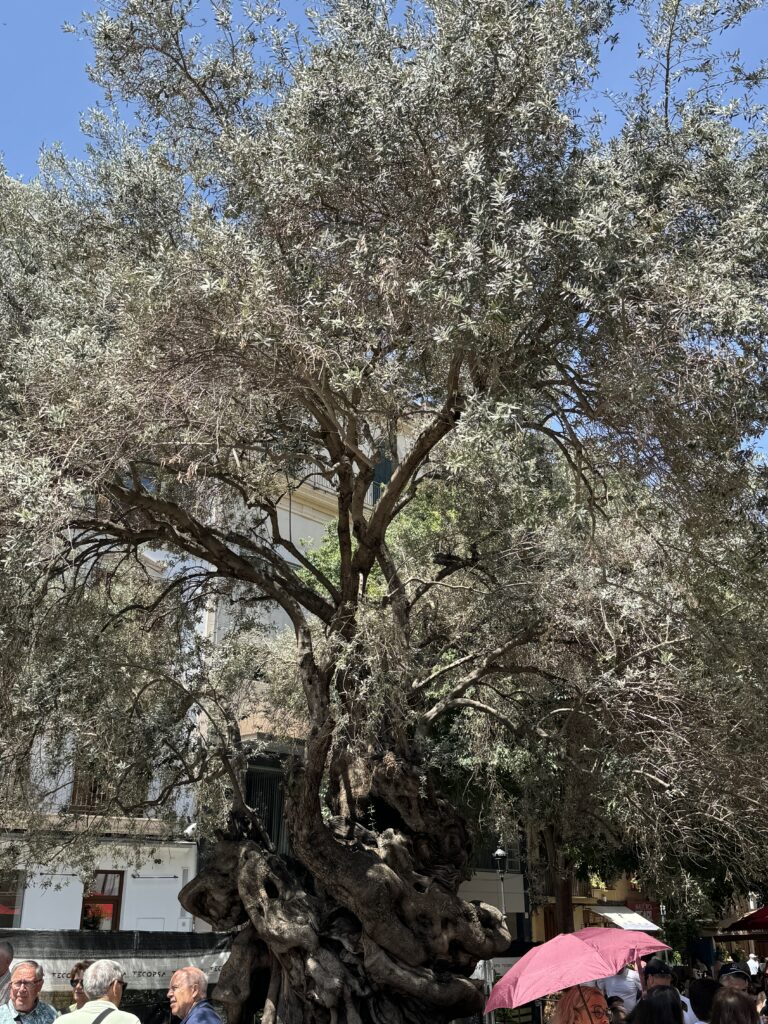
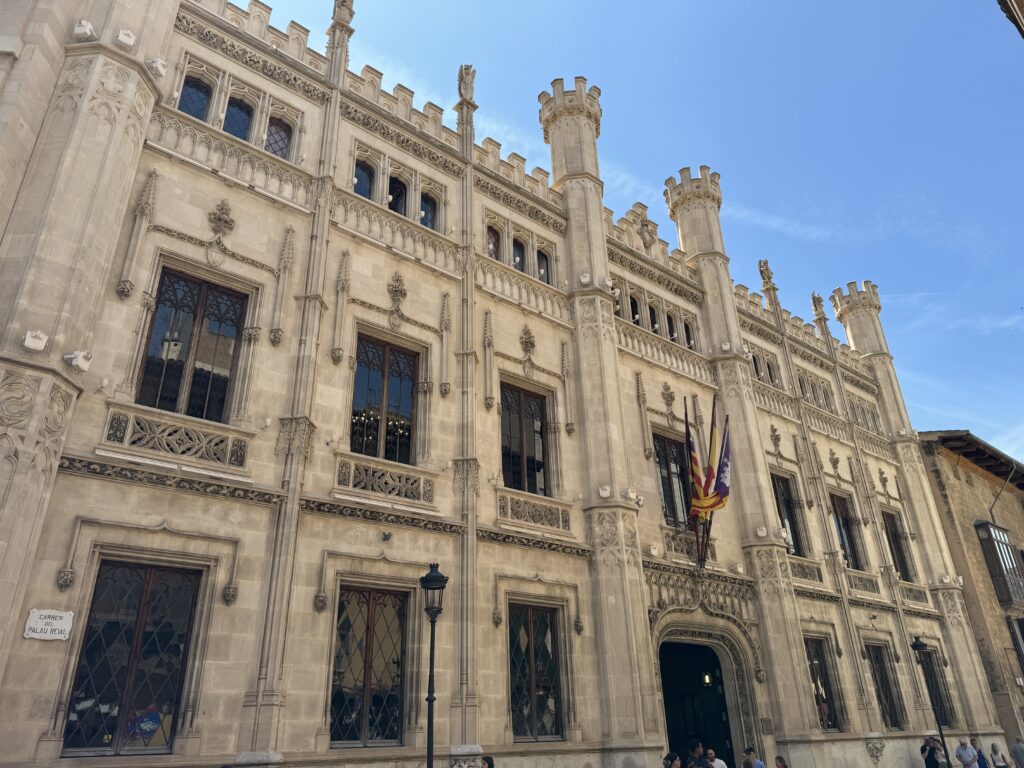
One square in the Old Town that you should add to your Palma itinerary is Plaça de Cort. The Plaça de Cort derives its name from having been the place where feudal court gatherings once took place. Today, it’s a lively area with cafes and restaurants surrounding it. This charming square in the heart of the city is famous for Olivera de Cort, opposite to the beautiful Town Hall. This is a 600-year-old olive tree brought to Palma in 1989 from the Pedruixella Petit estate in Pollença as a sign of peace. Many people think they can see faces in it, especially an ear, which came to be known as the ‘Orella de Mallorca’.
You will find some nice restaurants around the square, so you can have lunch here or grab a coffee to keep you energised for the rest of the day.
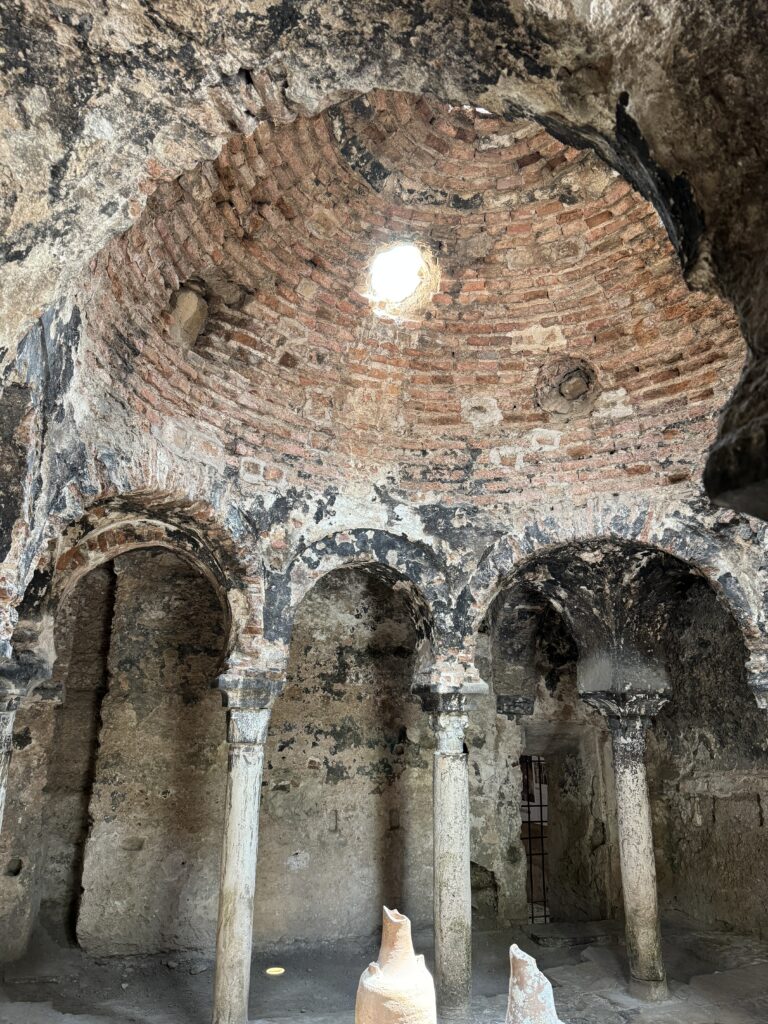
If you take a walk along the old medieval streets of Palma not far from the Cathedral you will see signs pointing the way to Banys Àrabs. Built during the time of the Moors in the 10th century but brought back to light only 100 years ago, the Arab Baths are possibly the only thing left from Medieval Palma. They were initially placed in the orchard of a manor house known as the Can Fontirroig, which probably belonged to a wealthy Moor. They date from the 10th to 12th centuries and are some of the few remains of the Arab city, Medina Mayurqa.
As every other Spanish city which was part of the Al Andalus Empire, Mallorca has a large Muslim heritage. Arab baths, or hammams, were customary back in the 10th century, and an important part of the community, where people would go to clean not only their their bodies, but also their souls. The water is considered sacred in Islam, and the hammam is one of the oldest surviving bath traditions in the world.
The Arab baths in Palma is one of the last remaining pieces of evidence of the Moorish occupation. Whilst they are small, they are well preserved and provide a glimpse into what it used to look like to go to the baths back in the 10th century. What is interesting about these baths is that the columns are all different, as they were built with remains from other dynasties that occupied Mallorca before the Moors. There is a preserved caldarium and tepidarium and some lovely gardens where visitors would have cooled off after their hot bath all those hundreds of years ago.
Today the half-orange tepidarium, with its columns and shafts of shifting sunshine, is perfectly integrated into a garden. Some people like to come here to read or simply enjoy a sandwich when they get a break from their busy day. So, the purpose of the garden was preserved, as it was a good place for guests to cool off after taking a steamy bath.
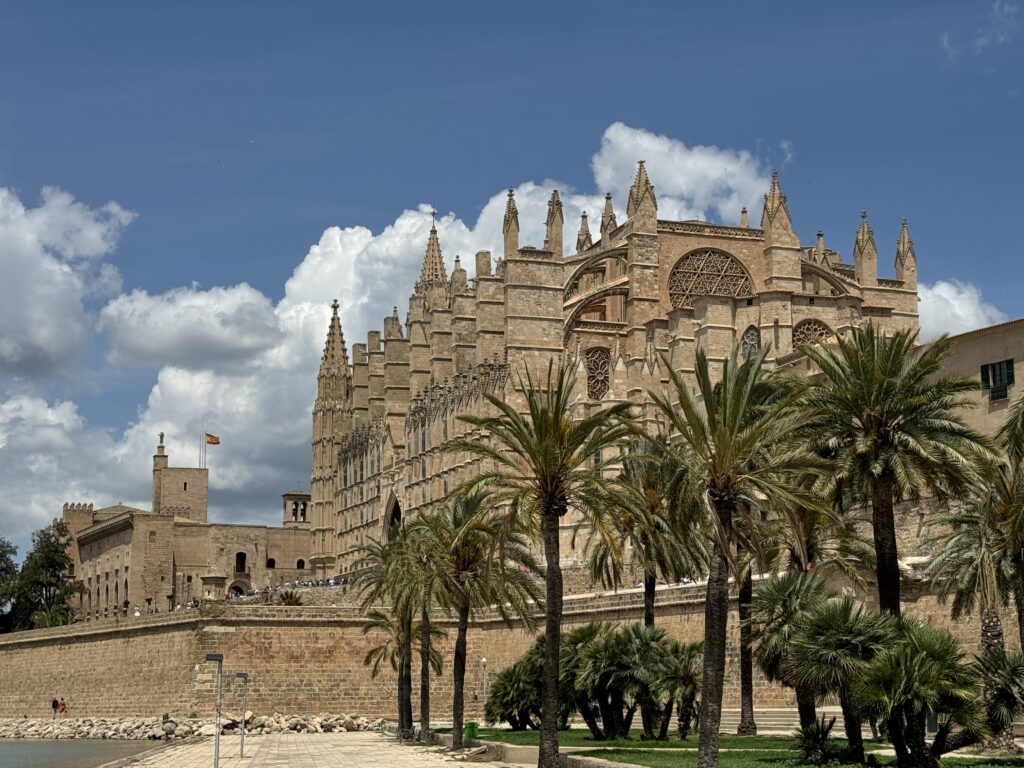
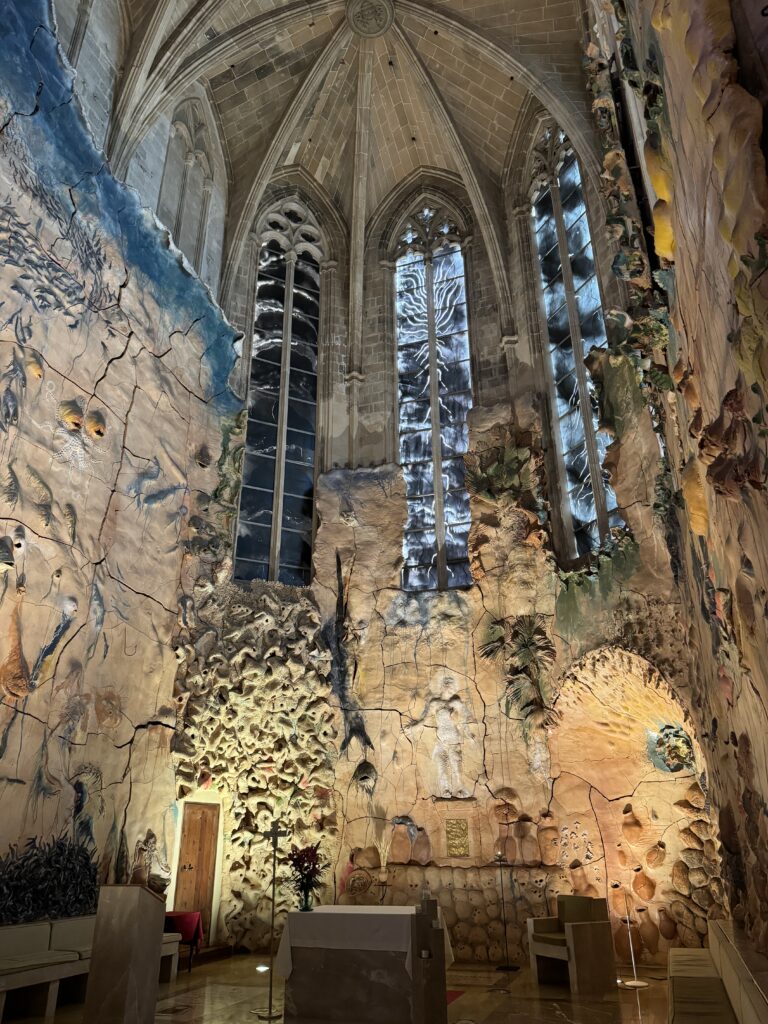
We can say that the Cathedral-Basilica of Santa María de Mallorca, also known as La Seu, is the heart and soul of the city. The Cathedral is located on the site of what was once the main mosque of Medina Mayurka, the capital of Muslim Mallorca for three centuries. The mosque was used as an interim church following the Christian reconquest in 1229. The construction of this impressive Levantine Gothic-style building began in the 13th century, on the orders of King Jaume I of Aragon, and was completed in the 1630s. after one voyage that he and his men took to the island. As they sailed toward it, they encountered a savage sea with strong winds and high waves that put them in great danger. The king swore that if they reached Mallorca safely, he would build a huge cathedral. And he kept his word, erecting one of the tallest cathedrals in Europe.
In front of the cathedral, you can also find Parc de la Mar. This artificial lake shows beautiful reflections of the cathedral. Near it, there are some places to sit and soak up the view of this impressive piece of architecture.
Some of the cathedral’s towers reach over 20 meters and the cathedral contains one of the largest stained glass windows in the world (with more than 1,200 pieces).
While the cathedral is very impressive to look at from the outside, going inside to see the beautifully decorated interior and the light pouring in through the stained glass windows. It has one of the tallest naves in the world, reaching 44 meters. As you enter the cathedral, you will be amazed by the multitude of stained glass windows (61 in total) that filter the light and add a rosy sheen across the floor and walls. This special design feature earned La Seu the name of ‘Cathedral of Light’. The slim pillars supporting the roof are apparently some of the slimmest load-bearing pillars in the world.
In 1901 Antoni Gaudi was invited to take over the restoration of the cathedral. Due to some misunderstanding the project was cancelled, but some of Gaudi’s ideas were still implemented. He is responsible for the beautiful stained glass in the Gothic windows of the Royal Chapel. He was helped by his disciple, Joan Rubió i Bellver, who designed some iconic buildings in Soller. One of the most striking architectural elements inside the Cathedral is the mural in the Chapel of Sant Pere, sculpted in terracotta by the local artist Miquel Barceló. The images represent scenes from the Gospel of St John, relating to the Last Supper, which the chapel is dedicated to. The colours and the details are so surreal, and at a first glance it does resemble Gaudi’s style.
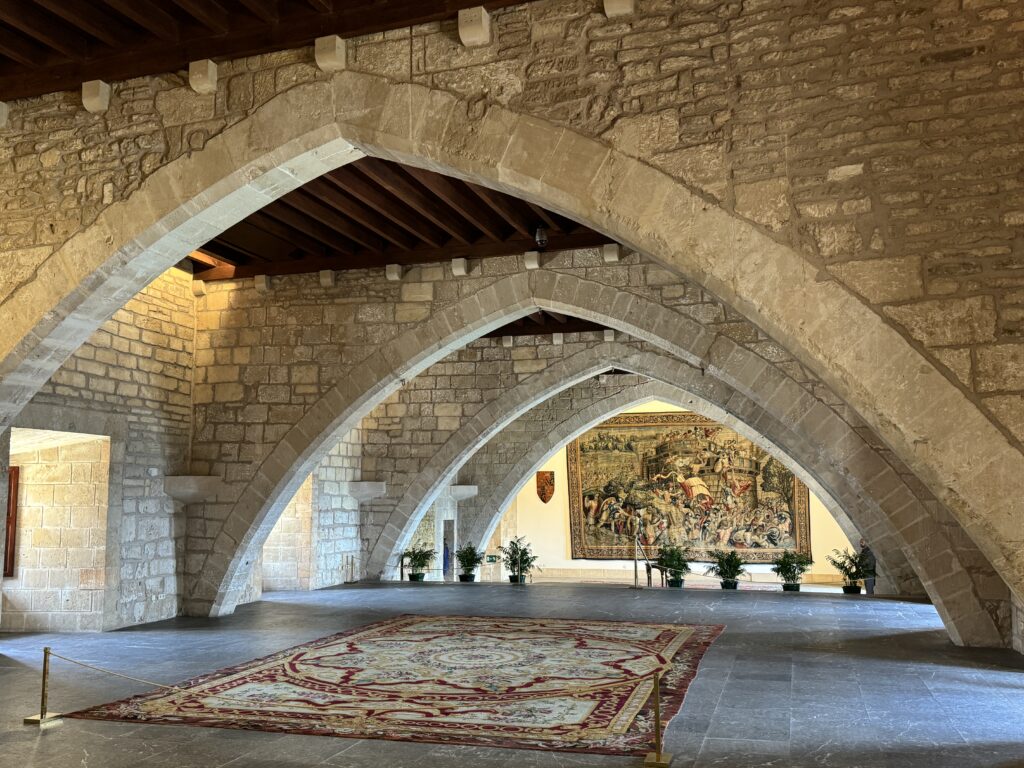
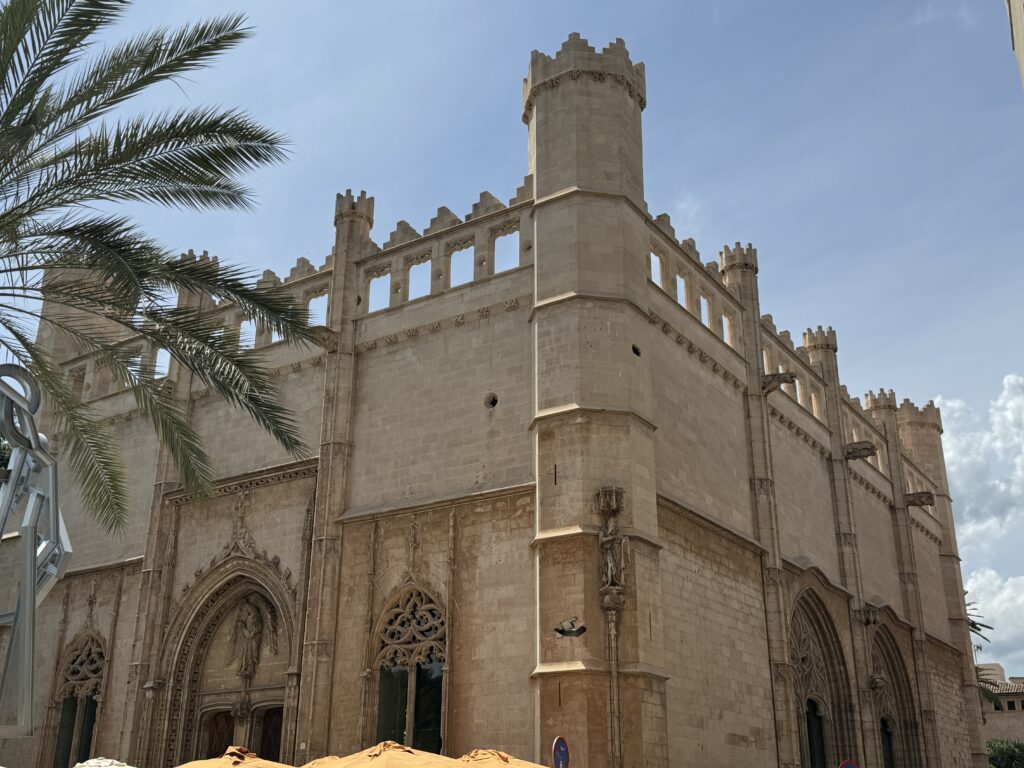
The Royal Palace of La Almudaina is located next to the cathedral, is a must-see place in Palma if you’re visiting the city in one day. It is the official residence of the kings of Spain during their visits to Mallorca. The palace as it is today was built over an old Roman fort back in the 10th century, by the Muslims when it used to be the seat of the Emir when Palma was under Arab rule. It was rebuilt in the 13h century, after the Christians conquered Mallorca and King Jaime I of Aragon came to the throne.
What’s special about the Almudaina is the combination of Gothic and Moorish styles that reflect the multiple cultural layers which influenced the architecture of the City of Palma. Over the years, the palace has been modified over and over again, in different architectural styles. Whilst the ground floor has a medieval architecture, the first floor, which was added to the Palace in the 16th century, is decorated with more recent furniture.
First-time visitors find it intriguing and splendid at the same time, especially as they discover the 14th chapel of Saint Anna, with its enormous stained-glass window and beautifully decorated state apartments.
Lonja of Palma is one of the greatest representations of Gothic architecture in Mallorca. It is located in the La Lonja Square, in the historic center of the city, near the port. It was built between the fifteenth century by Guillem Sagrera and was once the headquarters of the Colegio de los Mercaderes, who were in charge of the regulation and protection of trade and the maintenance of the port. Visiting the interior is worth your while.
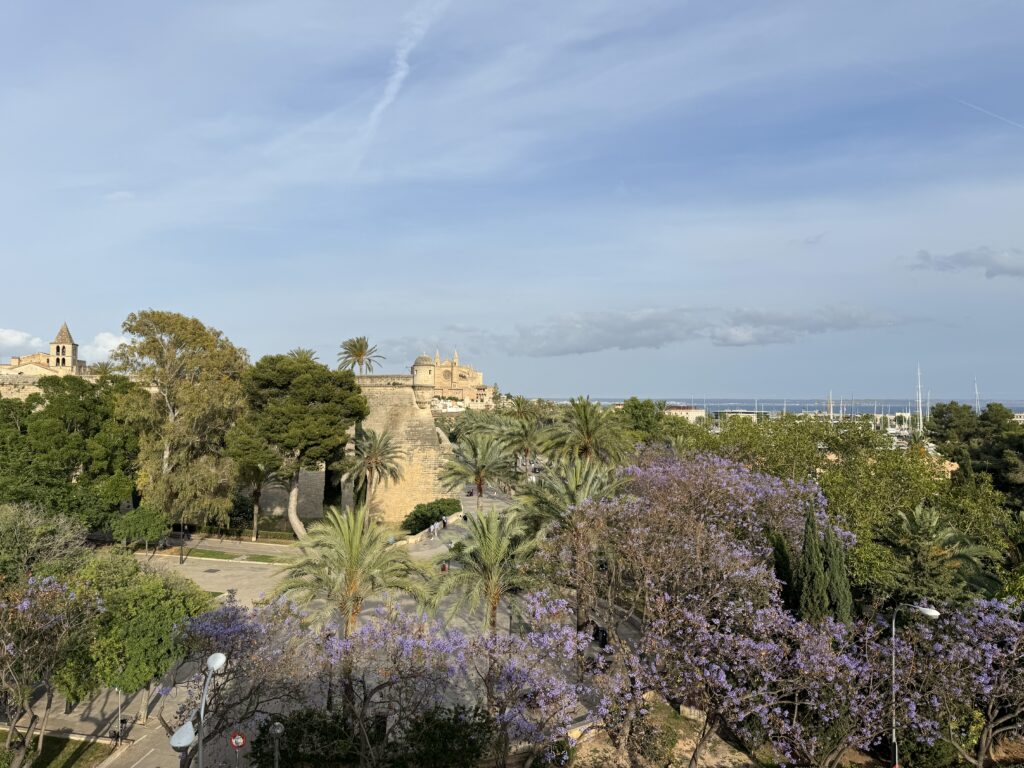
One of the best ways to end the day in Palma is a cocktail at the Sky Bar at Hostal Cuba. Located on the rooftop of an iconic building in the lively Santa Catalina neighborhood, the happy hour also comes with unbeatable views over the marina and the Cathedral. The roof terrace is small so booking is advised.
Day 2 - Cuevas de Genova
Discovered by accident in 1906, the Genova Caves (sometimes known as the Caves or Coves of Genova) have since become one of the most popular day trip destinations from Palma de Mallorca. They are only accessible via small-group guided tours which take approximately 30 minutes and run throughout the day. Admire the caves’ thousands of icicle-like stalactites and stalagmites, or book a convenient combination ticket that includes a Mallorcan tapas lunch at the restaurant above.
Discovered accidentally during the construction of a well in the year 1906, these caves form a set of underground galleries of calcareous origin joined by corridors formed in a completely natural way. These caves are in the middle of the residential neighbourhood of Genova, which belongs to the municipality of Palma de Mallorca. The caves stretch along an extension of almost 1 km, reaching up to 36 m deep.
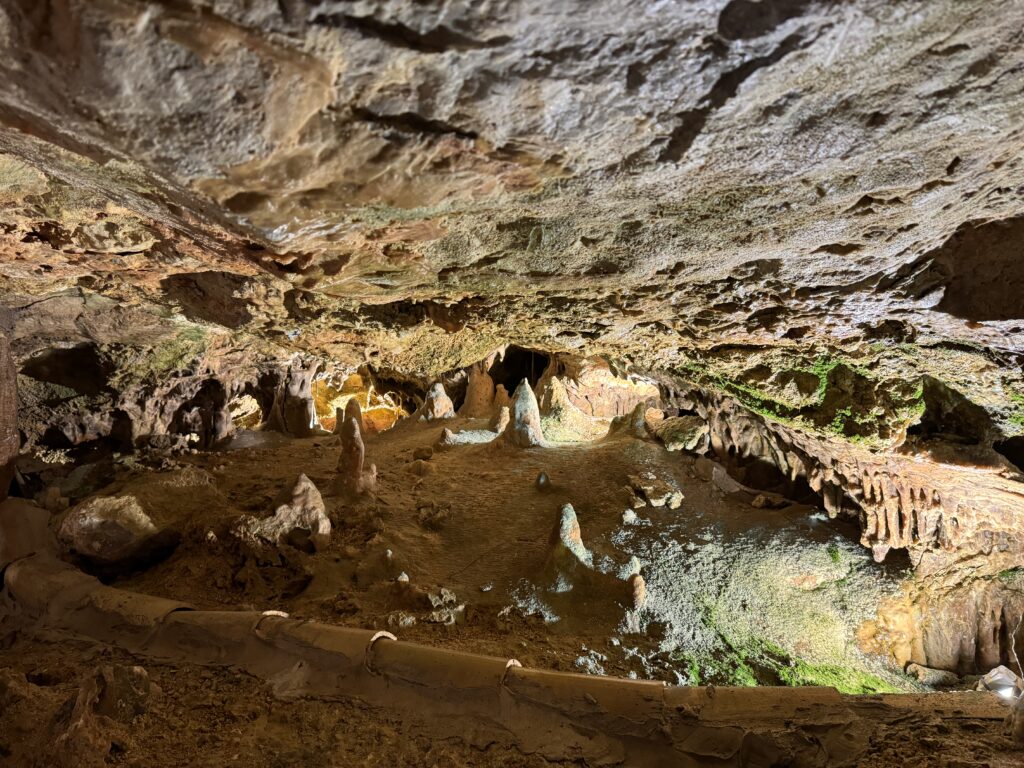
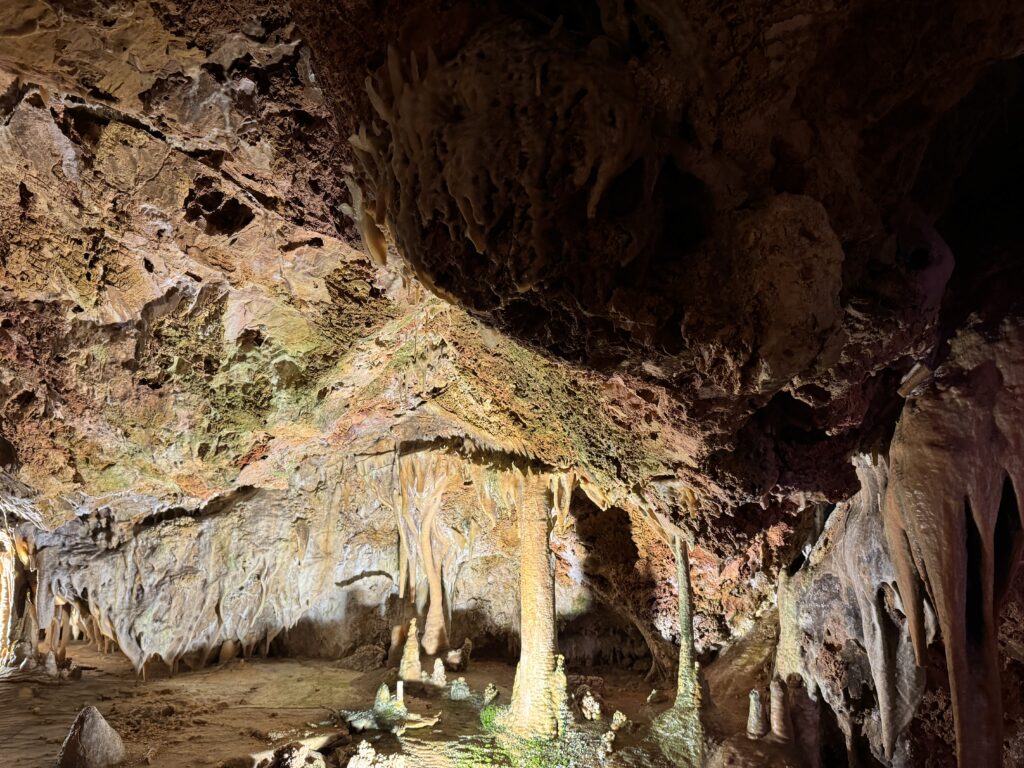
A trip to Mallorca should take you to at least one of the caves on the island, because there’s something serene and mysterious about all of them. Until not too long ago, they were used as smugglers’ hiding places or even as some sort of apartments for the locals. Today, Mallorca offers five caves open to visitors – three of them on the east coast, one in the northwestern part of the island, and the fifth in the district of Génova in Palma. For cave lovers, it’s worth to visit each of them, because no cave in Mallorca is equal to the other. Each one has its particularity and beauty.
The exact number of Mallorquin caves is unknown. Some speak of 200 caves in Mallorca, whereas others mention 300. According to experts, the total number of caves, however, could amount to more than 4,000, as most of them are very difficult to locate, because they’re situated in private properties or in inaccessible places.
Thanks to the variety of mineral colours, and its great concentration of eccentric formations, the colour stands out notably for the multitude of espeleatemas coraloide, something rare and hard to find (formations that are also known as popcorn or cauliflower). The place also has a huge natural irrigation of constant fresh water all year round, which favours the environment to be always very wet, a phenomenon that stands out remarkably in this aspect on the other 4 tourist caves that are on the island, giving to this corner of nature a value much appreciated.